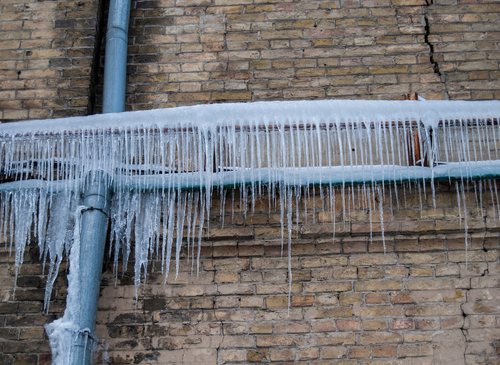Ways to Prevent Frozen Pipes in Cold Weather: Pro Advice
Ways to Prevent Frozen Pipes in Cold Weather: Pro Advice
Blog Article
We've noticed the article relating to 6 Ways to Prevent Frozen Pipes listed below on the net and figured it made perfect sense to relate it with you in this article.

Cold weather can damage your pipes, specifically by freezing pipes. Below's exactly how to prevent it from occurring and what to do if it does.
Intro
As temperature levels drop, the risk of icy pipelines rises, potentially causing pricey fixings and water damage. Comprehending just how to prevent icy pipelines is crucial for property owners in chilly climates.
Recognizing Frozen Pipes
What causes pipes to freeze?
Pipes freeze when exposed to temperature levels below 32 ° F (0 ° C) for prolonged durations. As water inside the pipes ices up, it expands, taxing the pipeline wall surfaces and possibly triggering them to break.
Threats and damages
Icy pipelines can lead to supply of water interruptions, residential or commercial property damages, and expensive repairs. Burst pipelines can flood homes and create substantial architectural damage.
Indicators of Frozen Pipeline
Identifying icy pipelines early can prevent them from bursting.
Just how to identify frozen pipelines
Seek lowered water circulation from faucets, unusual smells or noises from pipes, and visible frost on subjected pipes.
Prevention Tips
Insulating prone pipes
Wrap pipelines in insulation sleeves or use heat tape to shield them from freezing temperatures. Concentrate on pipes in unheated or exterior locations of the home.
Heating techniques
Keep indoor rooms adequately heated, especially locations with plumbing. Open cupboard doors to permit warm air to flow around pipes under sinks.
Safeguarding Outside Pipes
Yard hose pipes and outside taps
Disconnect and drain yard hoses prior to winter season. Install frost-proof spigots or cover outdoor faucets with shielded caps.
What to Do If Your Pipes Freeze
Immediate actions to take
If you suspect icy pipes, keep faucets open to alleviate stress as the ice melts. Utilize a hairdryer or towels soaked in hot water to thaw pipelines slowly.
Long-Term Solutions
Structural changes
Take into consideration rerouting pipelines away from exterior walls or unheated locations. Include additional insulation to attic rooms, cellars, and crawl spaces.
Upgrading insulation
Purchase premium insulation for pipelines, attic rooms, and walls. Appropriate insulation helps maintain constant temperatures and lowers the risk of frozen pipelines.
Final thought
Stopping frozen pipes requires aggressive steps and fast reactions. By comprehending the reasons, indications, and safety nets, house owners can secure their pipes throughout cold weather.
6 Proven Ways to Prevent Frozen Pipes and Protect Your Home
Disconnect and Drain Garden Hoses
Before winter arrives, start by disconnecting your garden hoses and draining any remaining water. Close the shut-off valves that supply outdoor hose bibs and leave the outdoor faucet open to allow any residual water to drain. For extra protection, consider using faucet covers throughout the colder months. It’s also important to drain water from any sprinkler supply lines following the manufacturer’s directions.
Insulate Exposed Pipes
Insulating your pipes is an effective way to prevent freezing. Pipe insulation is readily available at home improvement stores and is relatively inexpensive. Pay close attention to pipes in unheated areas such as the attic, basement, crawl spaces, or garage. Apply foam insulation generously to create a buffer against the cold. You can also wrap your pipes in heat tape or thermostat-controlled heat cables for added warmth.
Seal Air Leaks
Inspect your home for any cracks or openings that could let in cold air. Seal any holes around the piping in interior or exterior walls, as well as the sill plates where your home rests on its foundation. Additionally, make sure to keep your garage door closed unless you’re entering or exiting. Leaving it open creates a significant air leak that can lead to frozen pipes.
Allow Warm Air Circulation
During cold snaps, it’s essential to allow warm air to circulate evenly throughout your home. Leave interior doors ajar to promote better airflow. Open kitchen and bathroom cabinets to help distribute heat consistently around the rooms. If you have small children or pets, be sure to remove any household chemicals or potentially harmful cleaners from open cabinets for safety.
Let Faucets Drip
A small trickle of water can make a big difference in preventing ice formation inside your pipes. When temperatures drop significantly, start a drip of water from all faucets served by exposed pipes. This continuous flow helps prevent the water from freezing. Additionally, running a few faucets slightly can relieve pressure inside the pipes, reducing the chances of a rupture if the water inside does freeze.
https://choateshvac.com/6-proven-ways-to-prevent-frozen-pipes-and-protect-your-home/

As an avid reader on 6 Ways to Prevent Frozen Pipes, I think sharing that piece of writing was really useful. Sharing is good. Helping people is fun. I am grateful for being here. Don't hesitate to pay a visit to our blog back soon.
Schedule Appointment Report this page